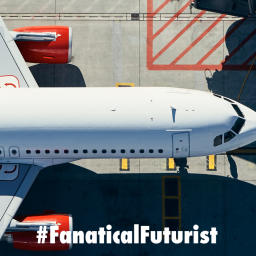WHY THIS MATTERS IN BRIEF
In this keynote Futurist speaker Matthew Griffin explores the impacts that AI and other technologies will have on the future of airlines, airports, and travel over the next twenty years.
 Love the Exponential Future? Join our XPotential Community, future proof yourself with courses from XPotential University, read about exponential tech and trends, connect, watch a keynote, or browse my blog.
Love the Exponential Future? Join our XPotential Community, future proof yourself with courses from XPotential University, read about exponential tech and trends, connect, watch a keynote, or browse my blog.
Firstly, thank you to Crystal and the team at the Dutch Caribbean Air Navigation Service Provider (DC-ANSP) and IATA, for asking me to be the opening keynote at this years Future of Aviation summit which was held at the Renaissance Wind Creek Curacao Resort on the beautiful Caribbean island of Curacao.
With an invite only audience comprised of government ministers, leaders, and experts from across Europe, NAM, and LATAM, the purpose of this years event was to discuss the future of the airport, aviation, and tourism industry from a regional and international perspective.
AI and the Future of Aviation, Airports, and Travel, by Futurist Keynote Speaker Matthew Griffin
As the aviation industry does its best to recover from the deep injuries inflicted on it by the pandemic, and grapple with the ever changing geopolitical and technological environment, it was my honour to be able to dive into what the leading players in the industry are doing and the near and far future.
First, I took a long view of the future of airports, airport operations, and Air Traffic Control (ATC) and Air Traffic Management (ATM), all of which are being impacted by the rapid rate of development of different technologies in different ways. Then, I dove into the future of aviation itself where we’re witnessing what I call a Wright Brothers 2.0 moment, with significant new developments in everything from airframes, energy, and propulsion as companies focus on costs, efficiency, ESG, and speed – which, as you can see from the presentation, ranges from Mach 1 to above Mach 25. And then, finally, but certainly not least I dove into the future of aviation maintenance and security, border control, and the future of the workforce – including the decentralisation of ATC and the technologies we have at our disposal to solve the industry’s almost infamous ATC hiring crisis.


